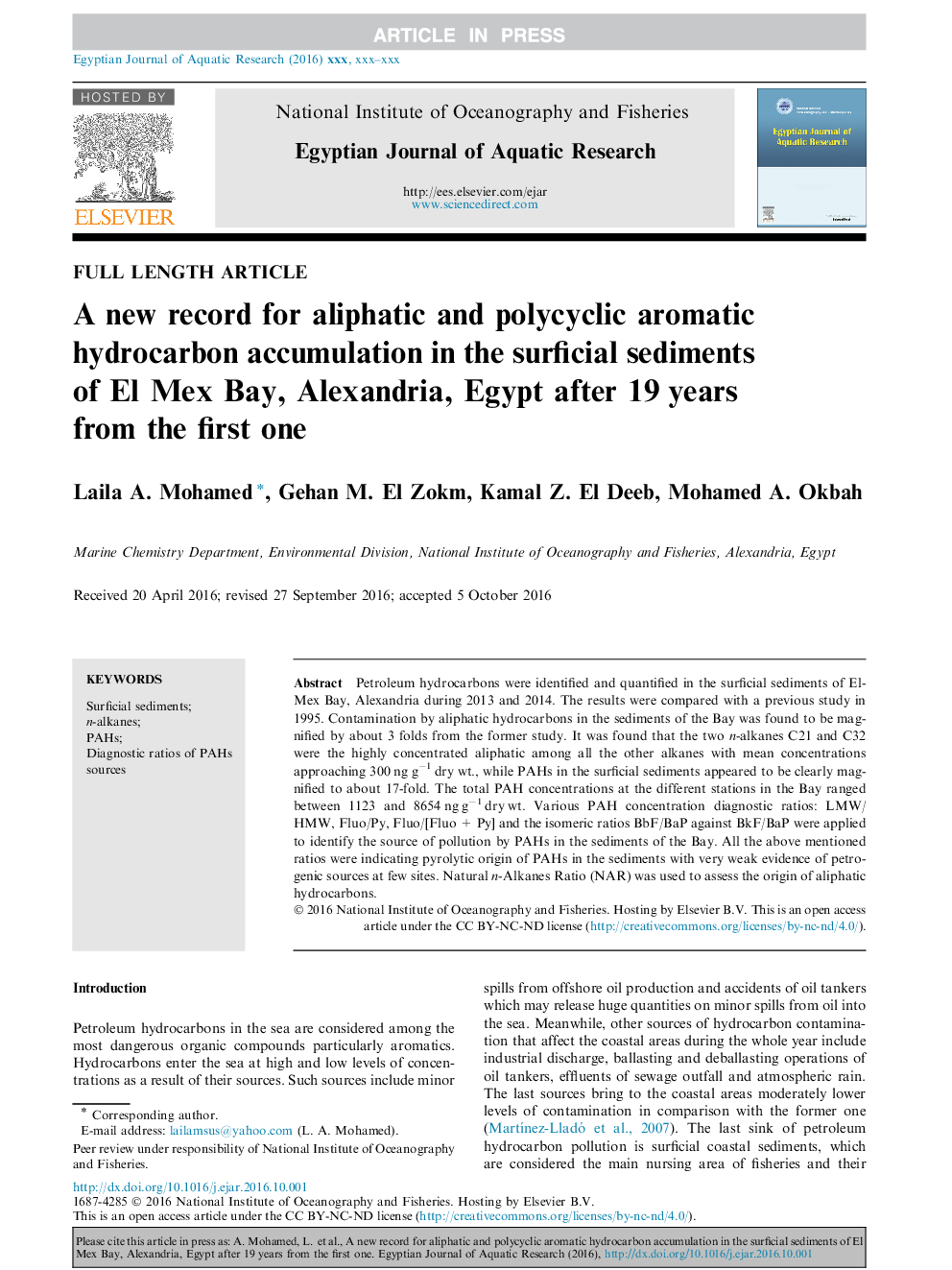| Article ID | Journal | Published Year | Pages | File Type |
|---|---|---|---|---|
| 8875266 | The Egyptian Journal of Aquatic Research | 2016 | 9 Pages |
Abstract
Petroleum hydrocarbons were identified and quantified in the surficial sediments of El-Mex Bay, Alexandria during 2013 and 2014. The results were compared with a previous study in 1995. Contamination by aliphatic hydrocarbons in the sediments of the Bay was found to be magnified by about 3 folds from the former study. It was found that the two n-alkanes C21 and C32 were the highly concentrated aliphatic among all the other alkanes with mean concentrations approaching 300 ng gâ1 dry wt., while PAHs in the surficial sediments appeared to be clearly magnified to about 17-fold. The total PAH concentrations at the different stations in the Bay ranged between 1123 and 8654 ng gâ1 dry wt. Various PAH concentration diagnostic ratios: LMW/HMW, Fluo/Py, Fluo/[Fluo + Py] and the isomeric ratios BbF/BaP against BkF/BaP were applied to identify the source of pollution by PAHs in the sediments of the Bay. All the above mentioned ratios were indicating pyrolytic origin of PAHs in the sediments with very weak evidence of petrogenic sources at few sites. Natural n-Alkanes Ratio (NAR) was used to assess the origin of aliphatic hydrocarbons.
Keywords
Related Topics
Life Sciences
Agricultural and Biological Sciences
Agricultural and Biological Sciences (General)
Authors
Laila A. Mohamed, Gehan M. El Zokm, Kamal Z. El Deeb, Mohamed A. Okbah,
